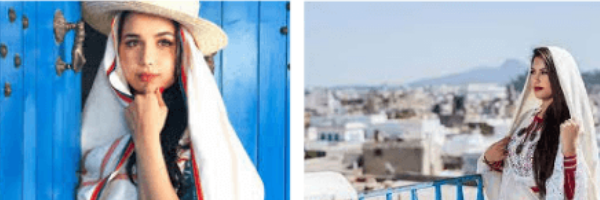
Tunisian handicrafts production give an idea about the country’s cultural identity. These products reflect the influences of empires through time and this constitutes an integral part of the Tunisian cultural wealth.
On the 16th of March of every year, Tunisia celebrates the National day of the traditional dress and crafts.Most frequently, an important march or festival would be organized in “Avenue Habib Bourgiba”, Tunis; in which hundreds of people expose their prettiest traditional outfits in a festive atmosphere.
During this day, men wear the Tunisian Jebba which is a traditional suit ; resulting of Turkish and Andalusian influences, the Jebba has preserved its original Arab roots, in terms of general appearance.It is made of flax, silk or wool .It covers all the body, except forearms and calves. It can be worn with a Farmla which is a vest as well as what we call Badia. The outfit is finished off with baggy trousers named Sirwel and the Balgha which are pointed or rounded leather shoes. Without forgetting the chechia, a traditional round hat.

On the other hand, women wear the Fouta and Blouza which are two pieces of the same outfit and they are made of cotton and silk. This outfit was subject to many changes and was mainly inspired by traditional wedding dresses of the past.
Not to forget to mention that these suits are commonly worn during wedding ceremonies and they differ from one region to another, from the north to the south. Southerners tend to be more conservative than notherners.
The 16th of March remains a distinguishable day in which Tunisians celebrate their cultural roots, honor the traditional outfit and emphasize the fact that the significant unique cultural heritage is retained through the handicrafts production.
Written by Maroua Mejri.
